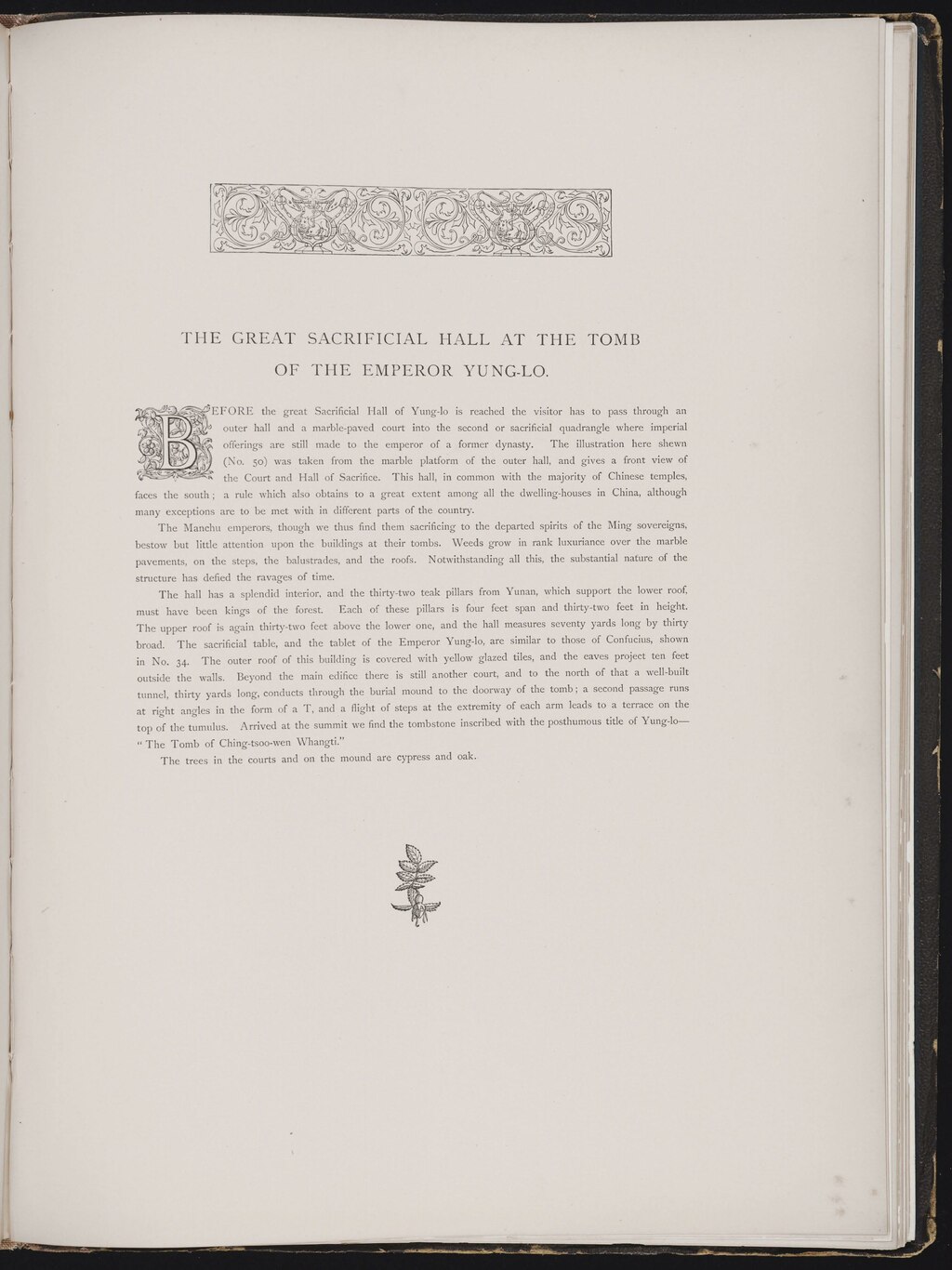THE GREAT SACRIFICIAL HALL AT THE TOMB OF THE EMPEROR YUNG-LO.
BEFORE the great Sacrificial Hall of Yung-lo is reached the visitor has to pass through an outer hall and a marble-paved court into the second or sacrificial quadrangle where imperial offerings are still made to the emperor of a former dynasty. The illustration here shewn (No. 50) was taken from the marble platform of the outer hall, and gives a front view of the Court and Hall of Sacrifice. This hall, in common with the majority of Chinese temples, faces the south; a rule which also obtains to a great extent among all the dwelling-houses in China, although many exceptions are to be met with in different parts of the country.
The Manchu emperors, though we thus find them sacrificing to the departed spirits of the Ming sovereigns, bestow but little attention upon the buildings at their tombs. Weeds grow in rank luxuriance over the marble pavements, on the steps, the balustrades, and the roofs. Notwithstanding all this, the substantial nature of the structure has defied the ravages of time.
The hall has a splendid interior, and the thirty-two teak pillars from Yunan, which support the lower roof, must have been kings of the forest. Each of these pillars is four feet span and thirty-two feet in height. The upper roof is again thirty-two feet above the lower one, and the hall measures seventy yards long by thirty broad. The sacrificial table, and the tablet of the Emperor Yung-lo, are similar to those of Confucius, shown in No. 34. The outer roof of this building is covered with yellow glazed tiles, and the eaves project ten feet outside the walls. Beyond the main edifice there is still another court, and to the north of that a well-built tunnel, thirty yards long, conducts through the burial mound to the doorway of the tomb; a second passage runs at right angles in the form of a T, and a flight of steps at the extremity of each arm leads to a terrace on the top of the tumulus. Arrived at the summit we find the tombstone inscribed with the posthumous title of Yung-lo — " The Tomb of Ching-tsoo-wen Whangti."
The trees in the courts and on the mound are cypress and oak.
